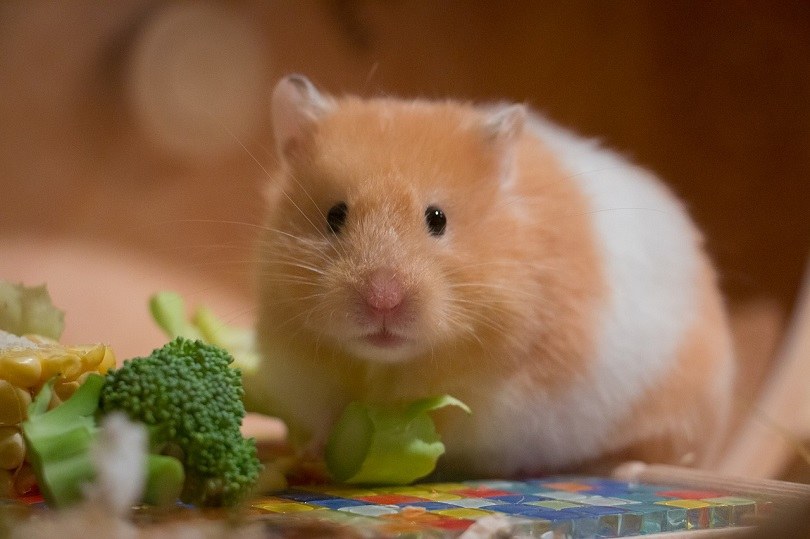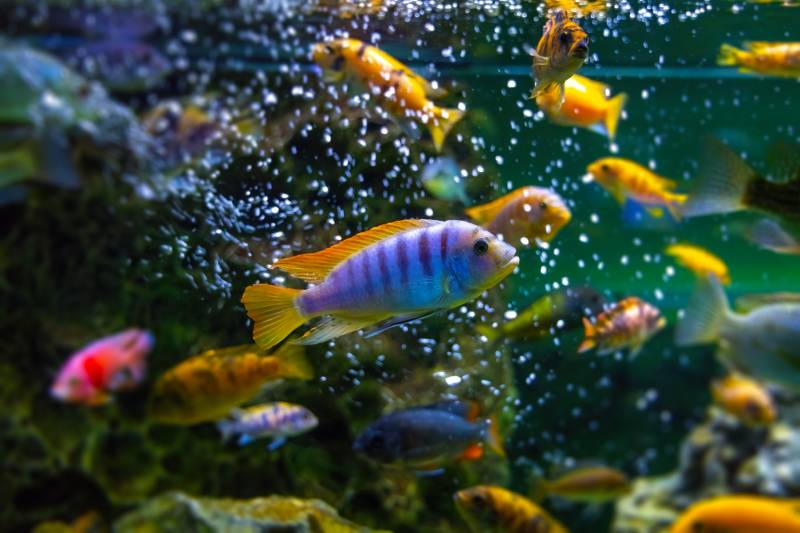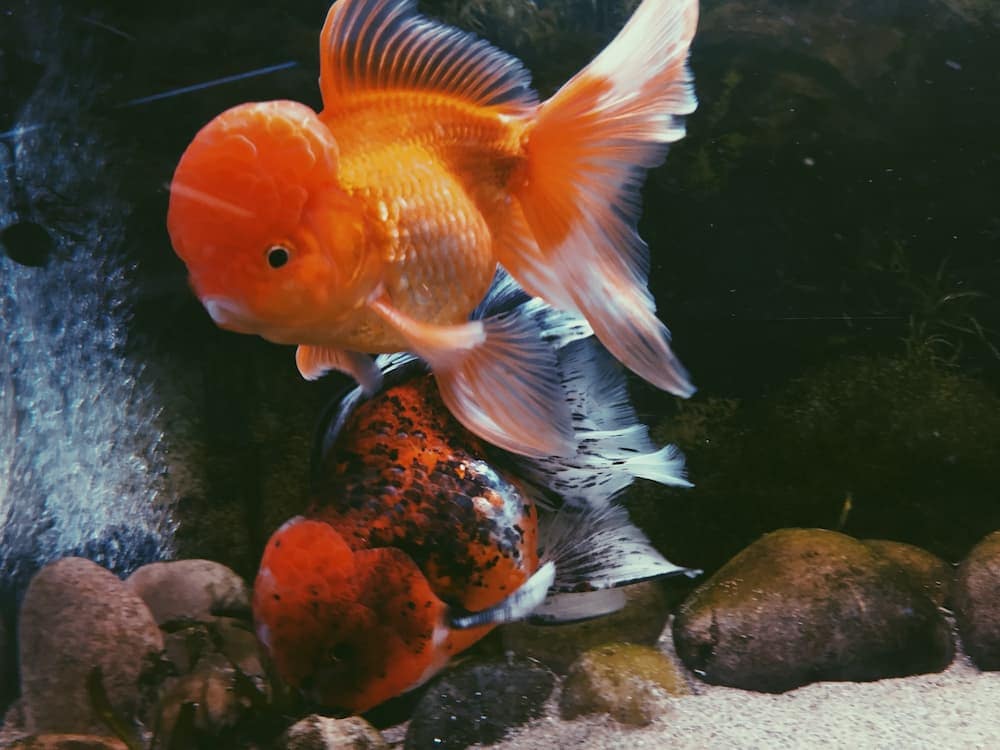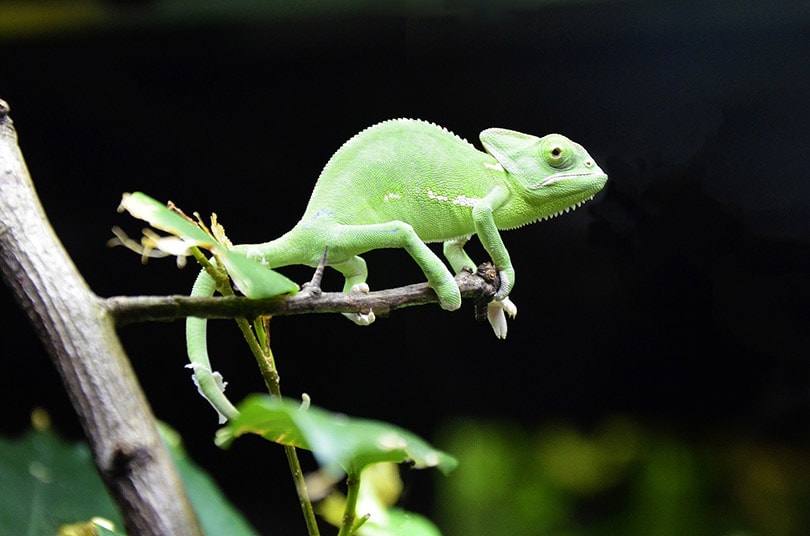VET APPROVED

The information is current and up-to-date in accordance with the latest veterinarian research.
Learn more »Click to Skip Ahead
Hamsters are arguably the most popular choice of pet rodents. They are docile, easy to keep, and described by some as excellent starter pets. However, before you rush to adopt one, it is essential to familiarize yourself with hamster basics to determine whether a hamster would be a good fit for you. This article will discuss what you need to know about hamsters, as well as what goes into taking care of one. Read on.
Hamster Facts
Hamsters are rodents, just like rats and mice. However, there are different species of hamsters. Various hamster species differ not only in physical characteristics and lifespans but also in behavior. As a result, some species are more family-friendly than others.
Top 5 Pet Hamster Species
The following are the various hamster species kept as pets:
1. Syrian/Golden Hamsters (Mesocricetus auratus)
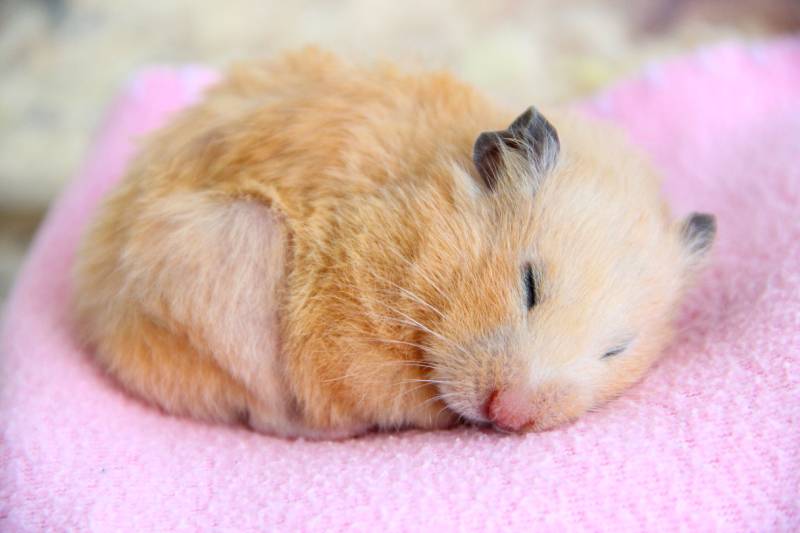
Syrian hamsters, also known as golden hamsters, are the most popular pet hamster species in the world. Syrian hamsters are described as friendly and can live for up to 3 years. However, they are a solitary species, meaning they prefer living alone; they fight when housed together with other hamsters.
2. Campbell’s Russian Dwarf Hamster (Phodopus campbelli)
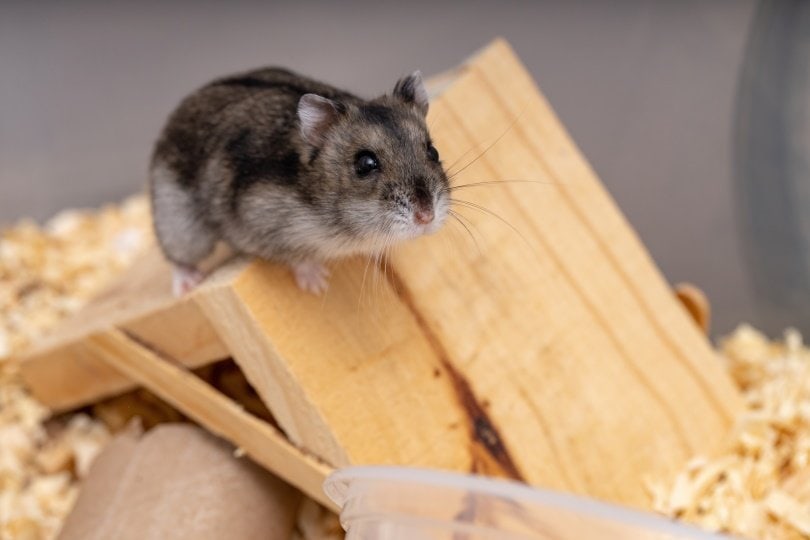
This furball has a reputation of being quick and challenging to handle. However, on the flip side, they usually do not mind sharing space with fellow dwarf hamsters (if introduced at a young age). Consequently, they are a good fit for people looking to keep more than one hamster. However, they are challenging to handle and do not make good pets for young children. In addition, though they can get along with their conspecifics, such cohabitation isn’t always peaceful in practice.
3. Winter White Dwarf Hamster (Phodopus sungorus)

The winter white dwarf hamster is the second-smallest pet hamster species. An interesting fact about this species is that their fur is white during winter and brown-gray during summer. As pets, their fur rarely turns white. Unfortunately, winter white dwarf hamsters are also described as somewhat difficult to handle. They have a lifespan of around 2 years.
4. Roborovski Dwarf Hamster (Phodopus roborovskii)
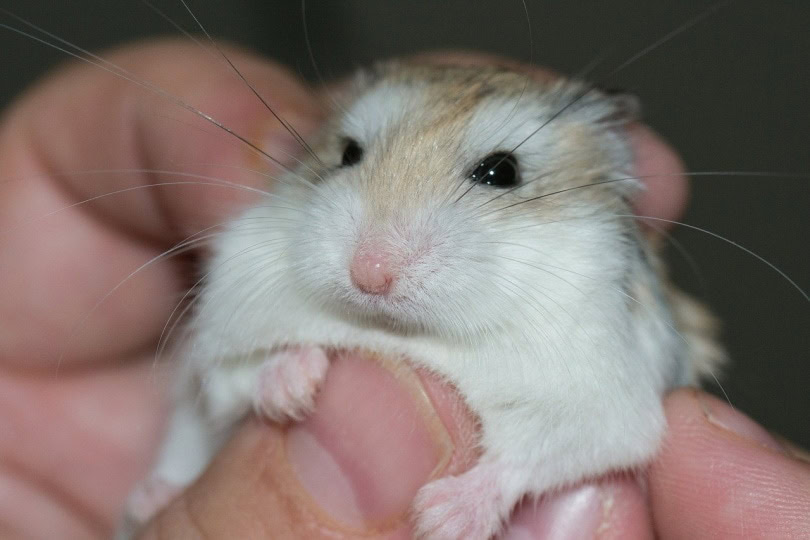
The Roborovski dwarf hamster is the tiniest of all hamster species. Like other dwarf species, they often tolerate living with others. Unfortunately, Roborovski Dwarf Hamsters are often more inclined to bite than other species. As a result, this hamster is not a good fit for small children.
5. Chinese Hamsters (Cricetulus griseus)
The Chinese hamster has the longest tail of all hamster species. However, this description is deceptive, as compared to other rodents their tails are still very small. Their “long” tail is only a feat of length when compared to the tail of other hamsters.
The laws regarding the ownership, breeding, and sale of Chinese hamsters are often more stringent than other hamster species (especially in the US). As such, you should take additional precautions to ensure that it’s legal to obtain a Chinese hamster prior to adopting one.
All the species above can make excellent pets (assuming it’s legal to own a hamster where you stay), as long as you understand and respect their natural dispositions.

Do Hamsters Make Good Pets?
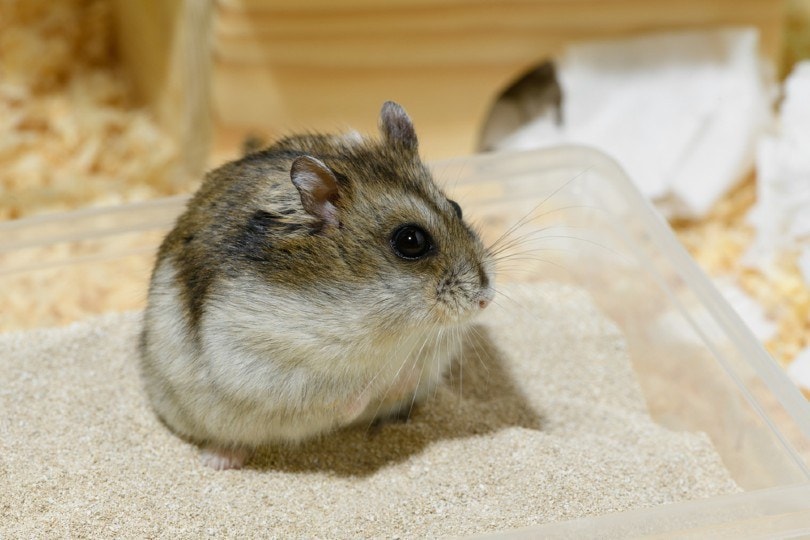
While hamsters make lovely pets, it is crucial to familiarize yourself with their behaviors before adopting one, as they have certain habits that make them unfit for some households. For example, they are nocturnal critters, meaning they are mainly active at night. As such, they may tend to be cranky during the day, as you would be if someone tried to talk to you while you were trying to sleep. Keep in mind though that some hamsters can be conditioned to be more active during the day (this isn’t strongly advised though).
Moreover, their nighttime activities such as digging, scratching, and running on the toy wheel can be pretty noisy. What’s more, you might have to alter your schedule to accommodate the hamster since you will probably have to feed, play, and bond with the little furball at night. Therefore, if you are not willing to make such changes in your life, a pet hamster might not be a good fit for you.
Where Can I Get a Hamster?
Fortunately, hamsters are legal in most states. While hamsters are available in all pet shops, we recommend getting one from either a reputable breeder or a rescue group. Adopting from a reputable breeder gives you a greater chance of getting a hamster that is not prone to hereditary conditions due to bad breeding practices. On the other hand, adopting from a rescue center allows you to care for a homeless pet.
When checking out hamsters, request to observe them while they are awake. As such, ask the seller to tell you the best time to visit. Observing a hamster when they are awake is critical, as it allows you to determine whether the animal is healthy. A healthy hamster should have clear eyes, clean fur, in addition to being active and curious. Some red flags to look out for include a dirty bottom and labored breathing.
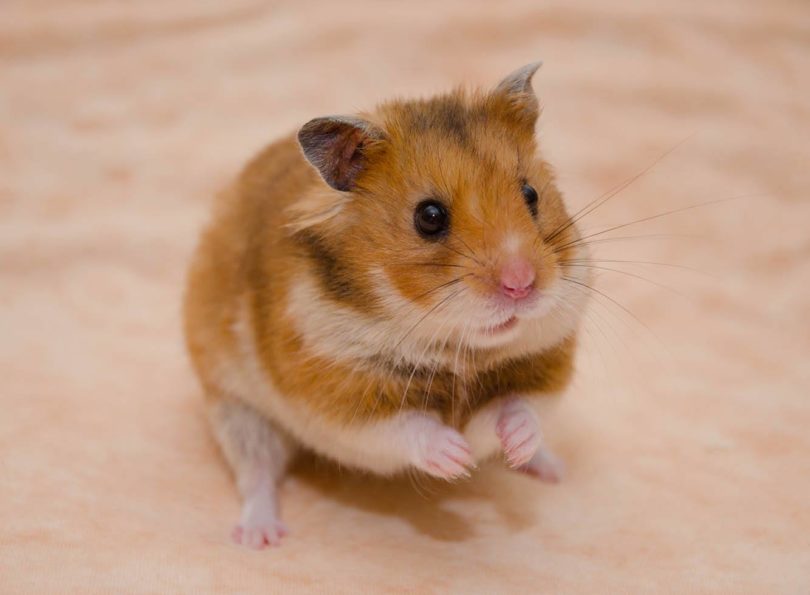
Selecting a Hamster
It is always best to visit your pet store or hamster breeder in person instead of just picking out a pet online. Seeing your hamster in person is key in ensuring it is problem-free. The best time to visit your breeder or pet store for selecting a hamster is in the late afternoon or evening.
As mentioned earlier, hamsters are nocturnal, and most active at evening and night times. If you go during the day, they will probably be asleep and might not react well to being roused from their slumber for an inspection.
Observing Your Hamster’s Environment
Before getting up close to your hamster, observe their environment. A good hamster environment should consist of the following:
- The environment looks and smells clean.
- The food appears fresh and the feed containers are clean.
- There are sufficient water bottles in the cage.
- The water containers are clean without stains or deposits of any foreign matter.
- The hamsters in the environment appear healthy. They have bright eyes and are alert and curious.
You should avoid picking a hamster from an environment that doesn’t appear well maintained. They may have underlying health issues associated with poor husbandry.
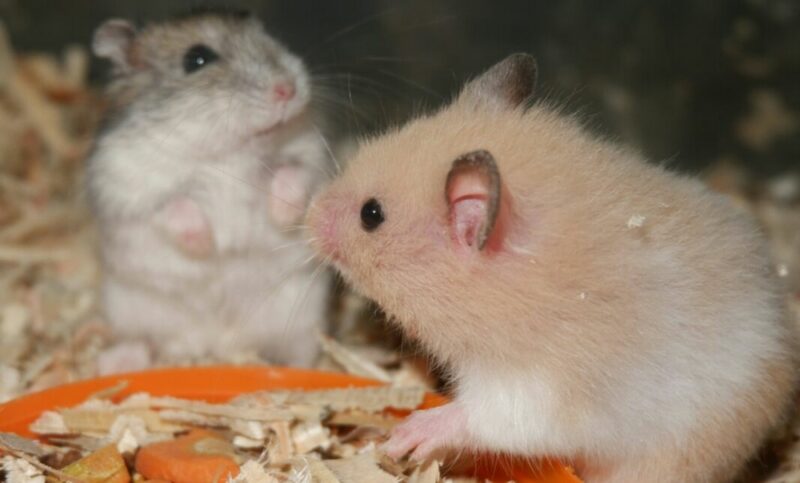
Hold And Inspect Your Hamster Of Interest
If you’re satisfied with your hamster’s environment, the next step would be to carefully inspect the hamster you’re considering. Make sure your hands are clean and dry before picking up a hamster for inspection. Hamsters have poor vision, but exceptional noses. If they smell something on your hand, they may bite out of curiosity.
Approach your hamster of interest slowly, ideally from behind, slowly placing a hand under them and your other hand on top of them, to carefully scoop them up. Do not quickly bring your hand towards the hamster right in front of their face; you may startle the hamster and a startled hamster might bite.
Hamsters that are held from a young age generally do not bite. If the hamster seems like an individual that bites, you might want to consider another hamster, especially if you have children at home. Despite their size, a hamster’s bite can pack a serious punch.
If the hamster bites while in your hand, do not attempt to resist the bite or squeeze the hamster with your hands. Instead, immediately bring your hands near the bedding of the hamster’s cage and open your hands, releasing the hamster back into their home.
If the hamster is relaxed in your hand, you should take a closer look to inspect the hamster for any potential issues. Look carefully at their eyes. They should be clear, symmetrical in appearance, free of discharge, and the hamster should be alert.
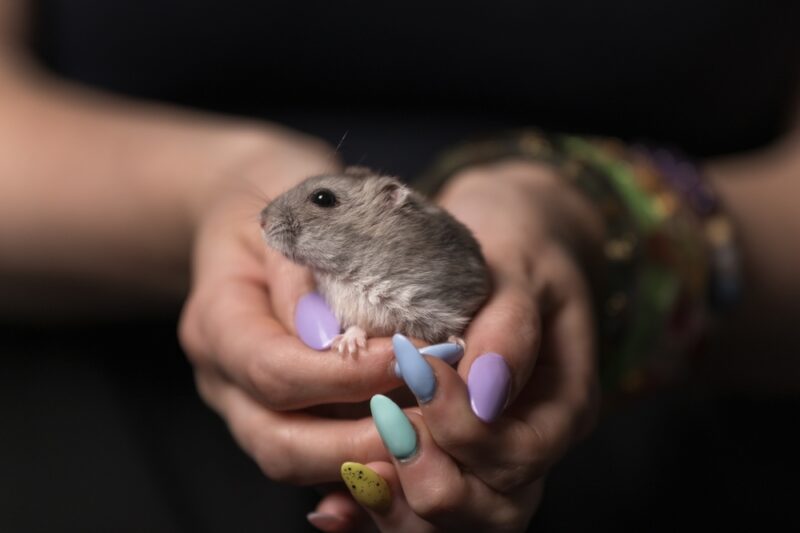
Next, check the ears. The ears of the hamster should be symmetrical in appearance, with no discharge or foul odor from the ears. There should be no patches of missing fur on the ears, or any bite marks. Also, look at the hamster’s mouth. The hamster should not be drooling or slobbering. There should be no teeth protruding from the mouth.
After checking the hamster’s face, you should inspect the rest of the hamster. Continue by inspecting the hamster’s fur. There should be no bite marks, no patches of thin or missing fur, and the hamster’s entire coat should be dry, grease-free, and neat. Ensure you also check the hamster’s rump. You should not see any discharge around the rump, missing fur, or a “wet” tail in this area too. Finish the general checkup by inspecting the hamster’s feet. There should be no signs of injury on any foot. The toes should be unbroken, and neatly trimmed.
Before you place the hamster back down, gently touch their body. There should be no hard bumps or lumps anywhere on the body. Do not squeeze the hamster too hard while you do this; a gentle approach is best and can give you enough cues about the hamster’s general well-being.
Place The Hamster In A Confined Area
It is best to place your hamster back down in a small, confined area to see how they move around. The hamster should be inquisitive, move without any signs of pain or discomfort, and take an interest in their environment, usually sniffing as they move around. If the hamster balls up and seems to be heavily breathing instead of showing an interest in their environment, it could indicate health issues. Do not pick a hamster that limps or seems very reluctant to move.
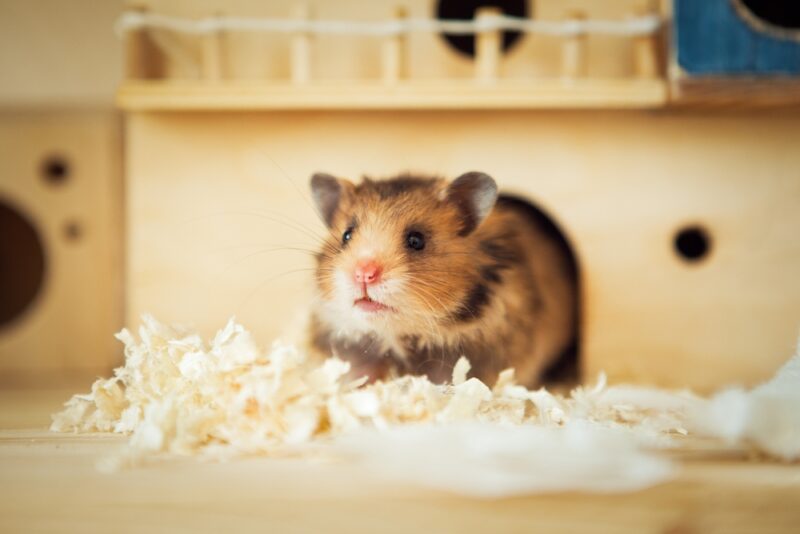
Other Considerations
If you’re satisfied with everything, ask your breeder or pet store about returns if your hamster proves unhealthy after purchase. Most reliable stores and breeders offer such a grace period. During this period, your priority should be getting your hamster checked by your vet to ensure they are in good health.
If you do not have an enclosure for your hamster, consider asking the seller to hold your pet for a day or two so that you can set up a proper home for your hamster. Having an enclosure ready for your hamster makes the transition to your home less stressful for the hamster.

What Kind of Home Does My Hamster Need?
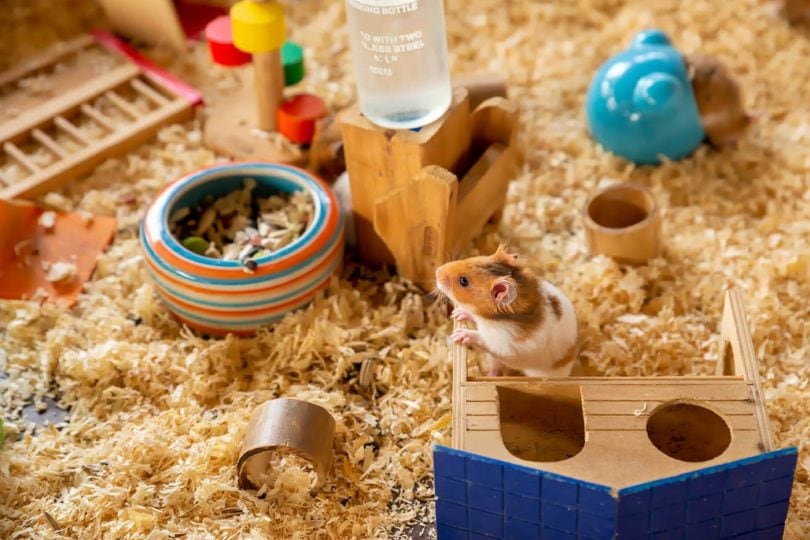
A hamster will be comfortable living in a 25-gallon terrarium with a mesh cover as a minimum. Nonetheless, the larger the enclosure, the happier the hamster will be. You cannot go wrong with more space for your hamster. In terms of the dimensions, the height of the enclosure is more important than the other dimensions, as hamster welfare improves when they have deep substrate to burrow in.
Keep the enclosure out of direct sunlight to allow the hamster peaceful sleep. For bedding, commercially available paper-based bedding is the best option. This is because such substrate is digestible if eaten and does not contain oils, as some wood shavings do, which can irritate hamsters’ respiratory tracts. Newspapers, if used as bedding, should be ink-free. Avoid using cedar or pine chips since they are toxic to hamsters.
To make your hammy truly happy, consider accessorizing their home with the following items:
Hiding Hut
Hamsters are shy critters. As such, you need to provide them with a safe space where they can hide when they do not want to interact with the outside world. A hiding hut also provides your pet with an excellent sleeping or lounging spot during the day (though most hamsters prefer burrowing over using such a hut if the opportunity arises).
Exercise Wheel
An exercise wheel is essential for keeping your hammy in shape. We recommend buying a solid wheel instead of an open wire exercise wheel, as the former is safer.
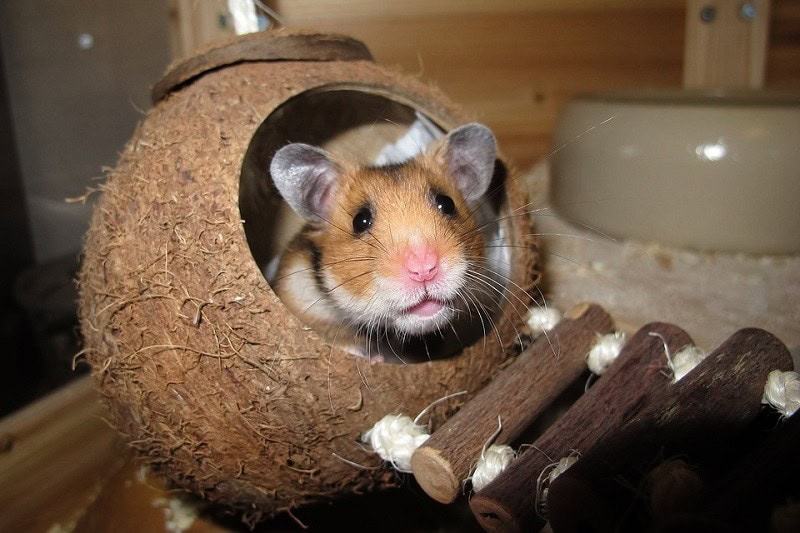
Toys
In addition to an exercise wheel, look for other toys to keep your pet busy when you are away. Always make sure that they are safe for hamsters before buying them.
Chewing Toys
As is the case with other rodents, the teeth of a hamster never stop growing. Therefore, you will need to provide the animal with appropriate chews (however, an appropriate diet can often circumvent this requirement to some extent).
Food Dish and Water Bottle
We recommend using a heavy, ceramic food dish, as it is difficult to tip over. A water bottle with a drinking tube is preferable since it ensures the hamster does not drink water containing poop or bedding.
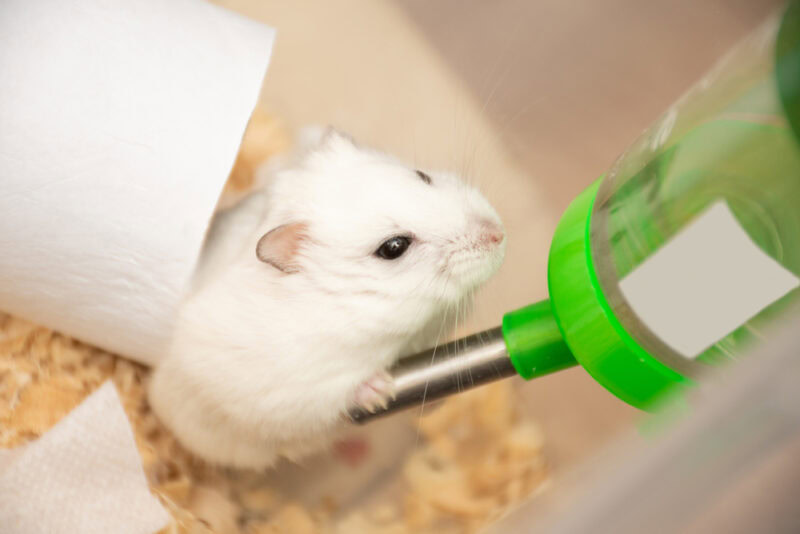
What Should I Feed My Hamster?
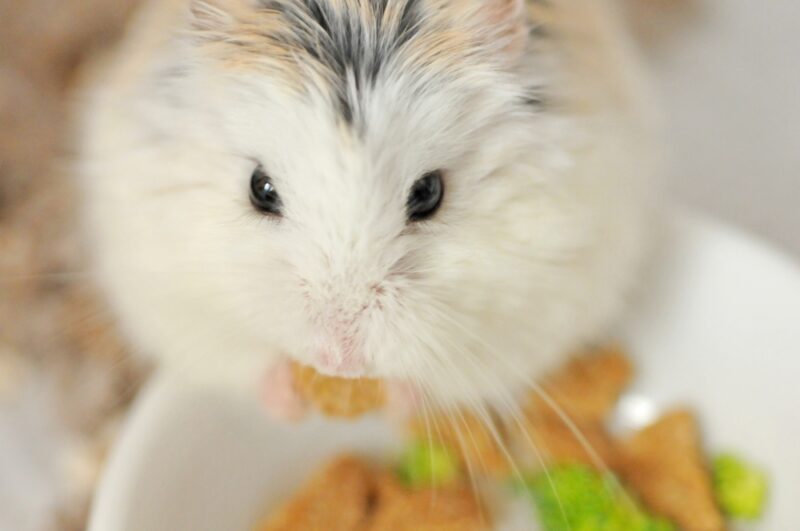
A high-quality commercial hamster pellet is the way to go since it contains a mix of grains, seeds, cracked corn, and is fortified with minerals and vitamins, providing your pet with a good nutritional balance. It also doesn’t allow your pet to pick and choose their favorite food items (which can lead to nutritional imbalance).
You can and should supplement your hammy’s diet with fiber-rich foods such as hay and certain vegetables to spice up their diet. The occasional nut is not bad either, as long as you do not go overboard due to its high-fat content.
- Onions
- Raw kidney beans
- Rhubarb
- Raw potato
- Chocolate
- Candy
- Any junk food

How Do I Take Care of My Hamster?
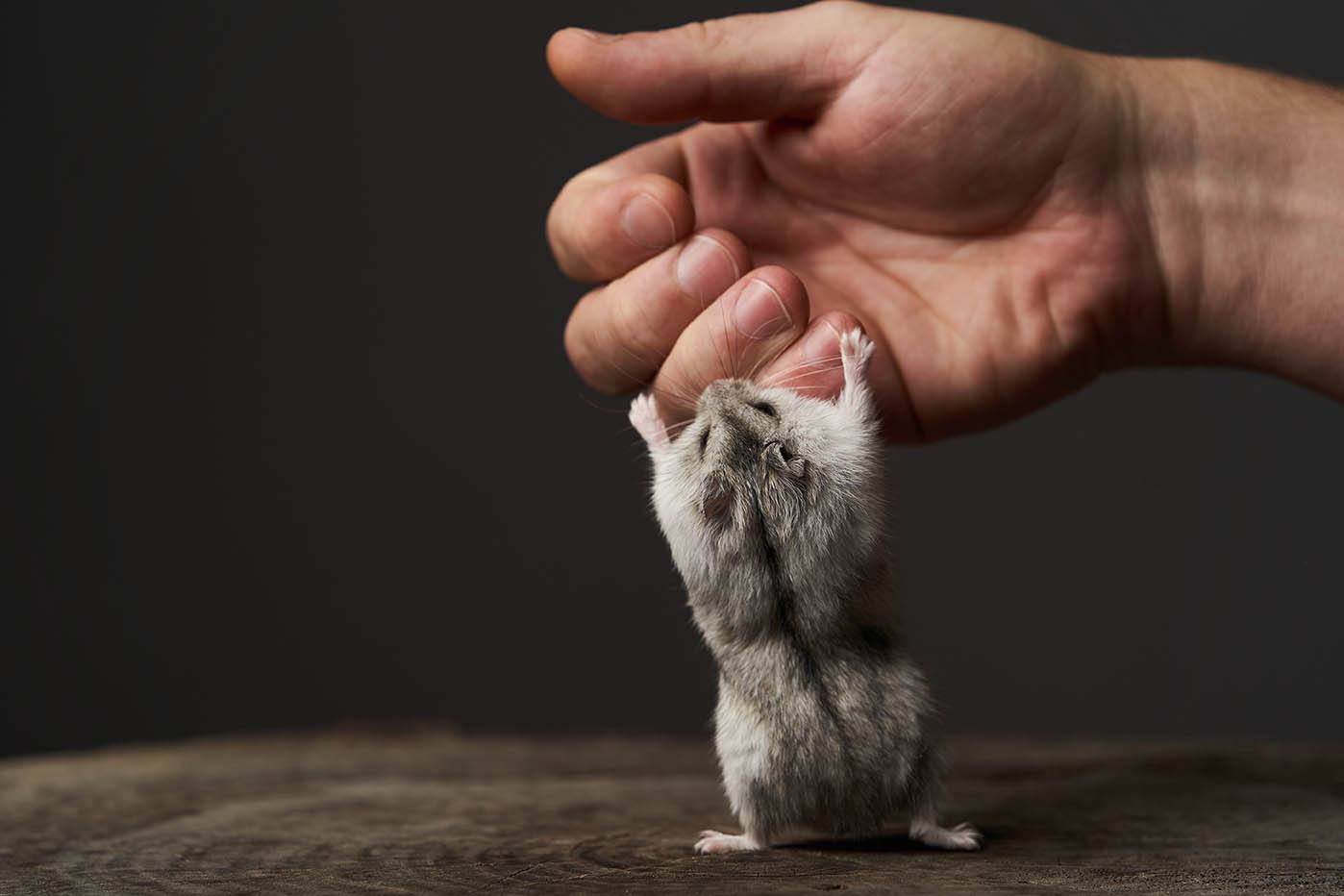
Doing the following things will make your munchkin the happiest hamster on the planet:
Allowing Plenty of Out-of-Enclosure Time
Allowing your hamster ample playtime outside their enclosure is one of the best ways of providing them with exercise. It also allows the hamster to bond with the family.
Whatever you do, do not turn your hammy loose in the house since it will be incredibly difficult to trace them once they disappear. Additionally, the hamster might end up chewing electrical wiring. Therefore, ensure to supervise your pet when they are out of their habitat.
Handle Your Hamster Properly
The proper way of picking up a hamster is by using both hands and cradling them in cupped hands. Do the same when putting them down. When cradling the hamster, talk to them softly so they can get used to your scent and voice.
Grooming
Fortunately, you do not have to bathe or brush your hamster. Hamsters are fastidious groomers and enjoy sand baths to keep themselves tidy.
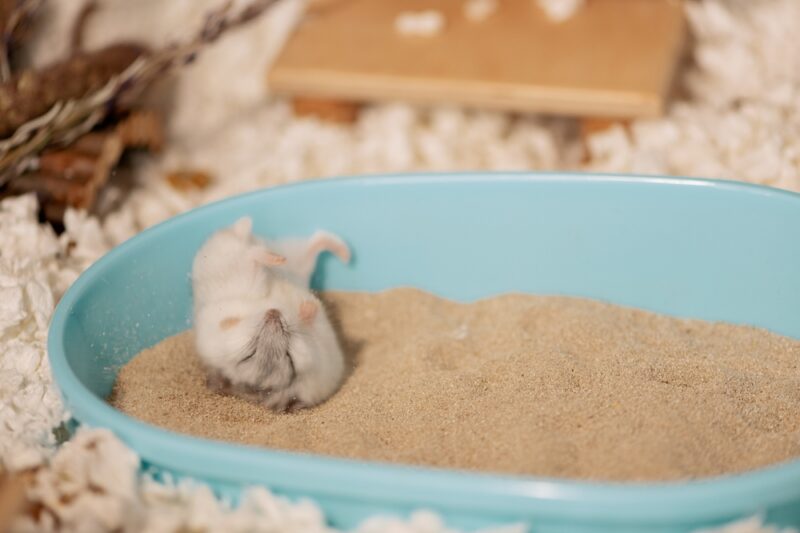
How Do I Know If My Hamster Is Sick?
In most circumstances, a healthy hammy typically sleeps throughout the day, while being active at night. As such, one of the potential signs of illness is inactivity at night.
- Lack of appetite
- Visible diarrhea
- A wet tail
- Difficulty chewing or overgrown teeth
- Patches of missing fur
- Lumps or swellings
- Discharge from the nose/eyes/mouth
- Difficulty in breathing
If you notice any of the above signs, schedule a vet visit immediately.

Related Reads:

Final Thoughts
While hamsters are a joy to own, they require lots of care to be happy and healthy. Therefore, ensure to provide them with everything they need to live a comfortable life.
Here are the care guides for a few more interesting pets!
- How to Take Care of a Toad (Care Sheet & Guide)
- How to Take Care of Pygmy Goats (Care Sheet & Guide)
- How to Take Care of Mini Pigs as Pets (Care Sheet & Guide)
Featured Image Credit: mordilla-net, Pixabay
